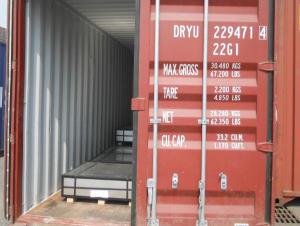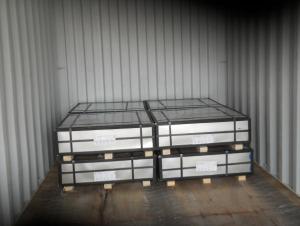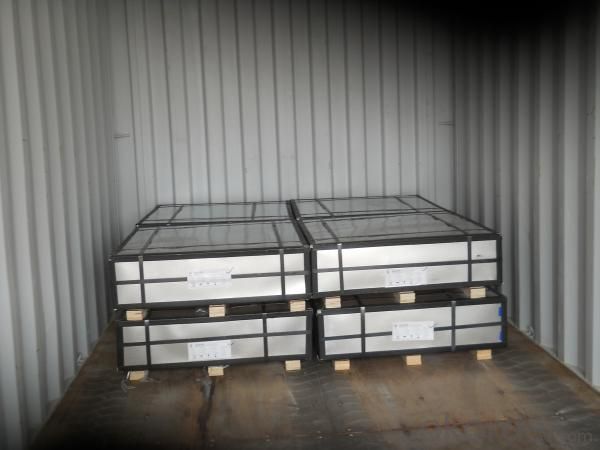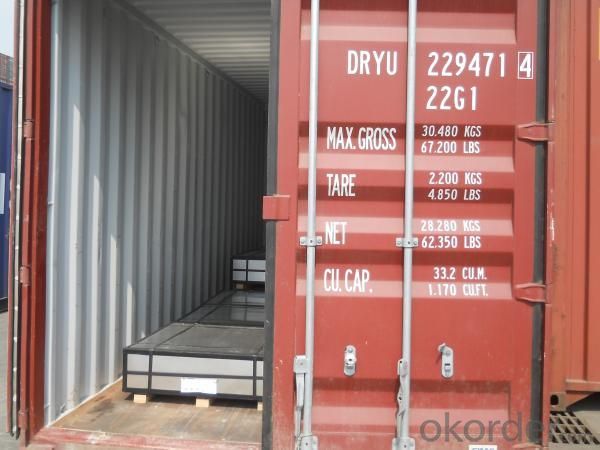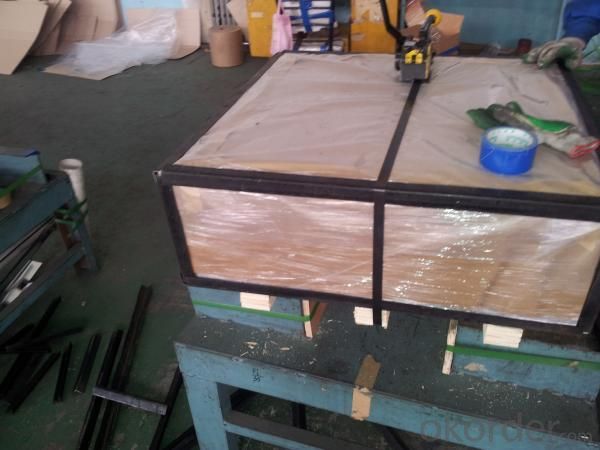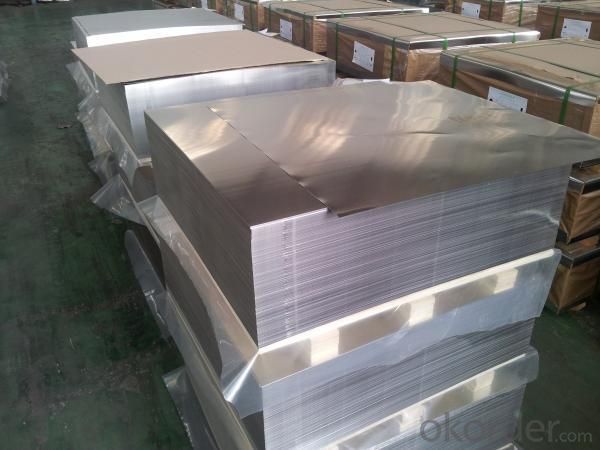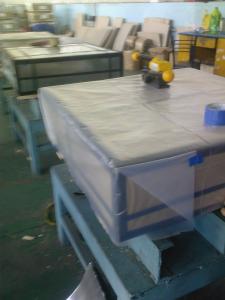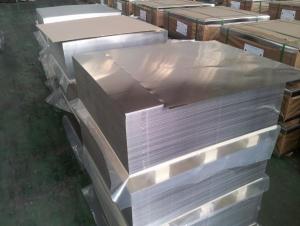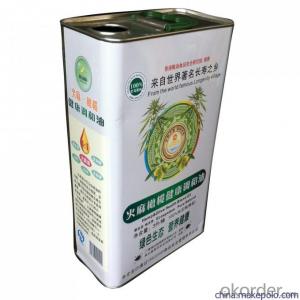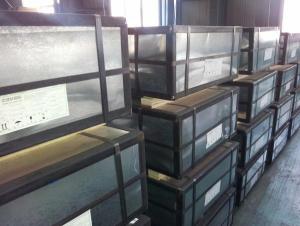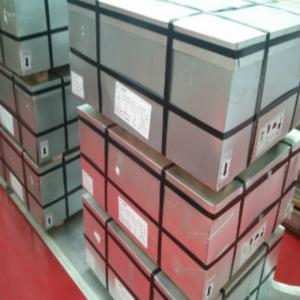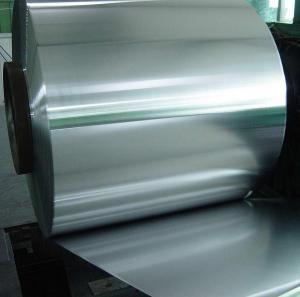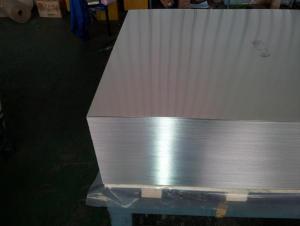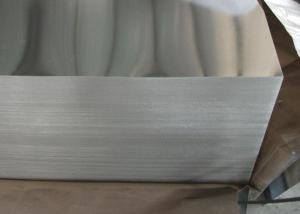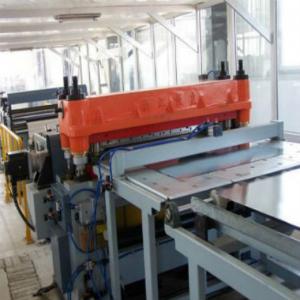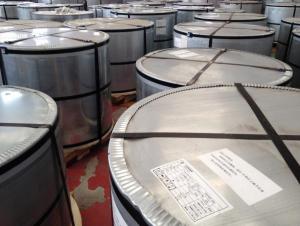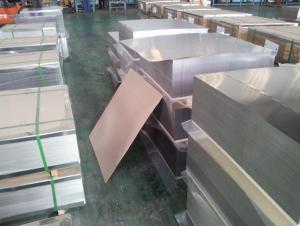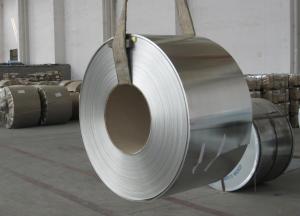Tinplate For Edible Oil Can-CFX
- Loading Port:
- China Main Port
- Payment Terms:
- TT or L/C
- Min Order Qty:
- 20 Tons~25 Tons m.t.
- Supply Capability:
- 40000 MT Per Month m.t./month
OKorder Service Pledge
OKorder Financial Service
You Might Also Like
General information of Tinplate For Edible Oil Can
|
Steel Type |
MR |
|
Temper (BA&CA) |
T1~T5, DR8 |
|
Coating |
2.8~8.4g/m2 |
|
Thickness & Tolerance |
0.15~0.5mm (Tolerance:±0.01mm) |
|
Width & Tolerance |
600~1000 mm(Tolerance: +2/-0mm) |
|
I.D |
508 MM |
|
Coil Weight |
3~10 MT |
|
Passivation |
311 |
|
Oiling |
DOS |
|
Surface Finish |
Bright ,Stone ,Silver ,Matte |
|
Min Order |
25 Tons for 1 20 feet FCL |
|
Package |
Seaworthy Export Standard Wooden Pallet |
|
Standard Available |
GB/T2520-2000, JIS G3303, ASTM A623, BS EN10202 |
|
Lead Time |
35 days after receiving buyer's original L/C or Prepayment |
|
Special specifications are available on customers' requirements. | |
Technical data of Tinplate For Edible Oil Can
|
Chemical Composition(%) |
Mechanical Property |
|
C:0.02~0.04 |
Yield Strength: (Mpa):280~320 |
|
Si:0.01~0.03 |
TensileStrength: (Mpa):340~390 |
|
Mn:0.18~0.22 |
Elongation:20%~30% |
|
P:0.014~0.016 |
------------- |
|
S:0.006~0.009 |
Application of Tinplate For Edible Oil Can
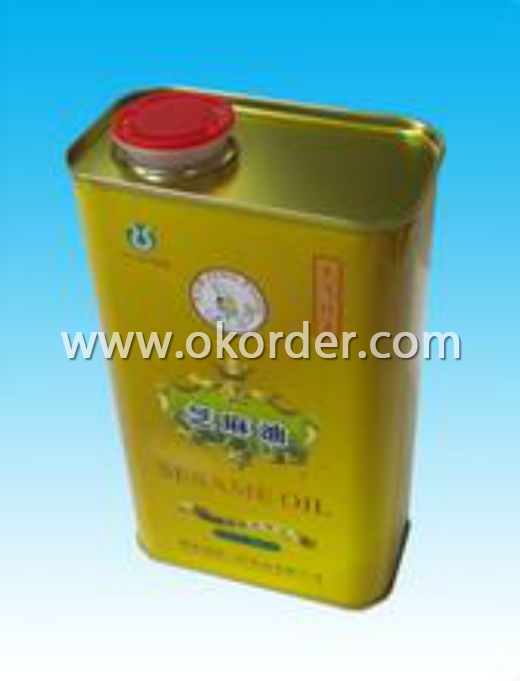
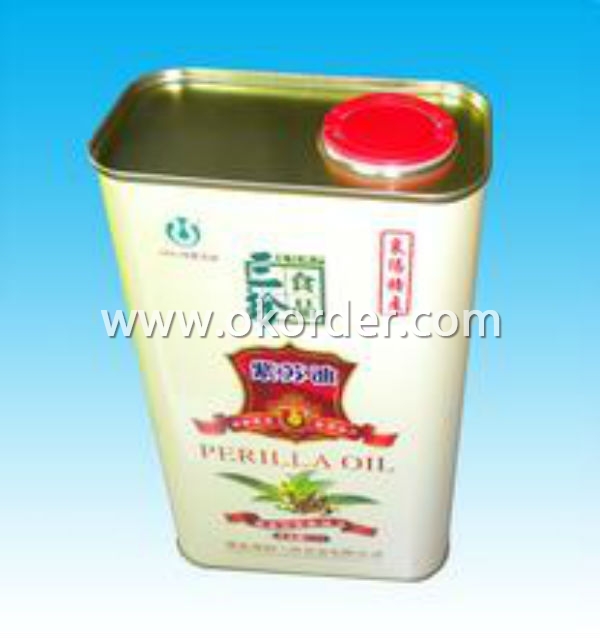
Tinplate is widely used for making all types of containers such as artistic cans, tea cans, painting cans,
chemical package cans and metal printing etc. Its applications are not limited to containers; recently,
tinplate has also been used for making electrical machinery parts and many other products.
Equipment and Facility of Tinplate For Edible Oil Can
Tin Coating Line of Tinplate For Edible Oil Can
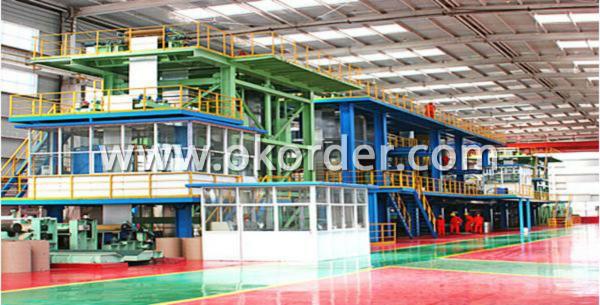
Cold Rolling Mill Batch Annealing Furnace
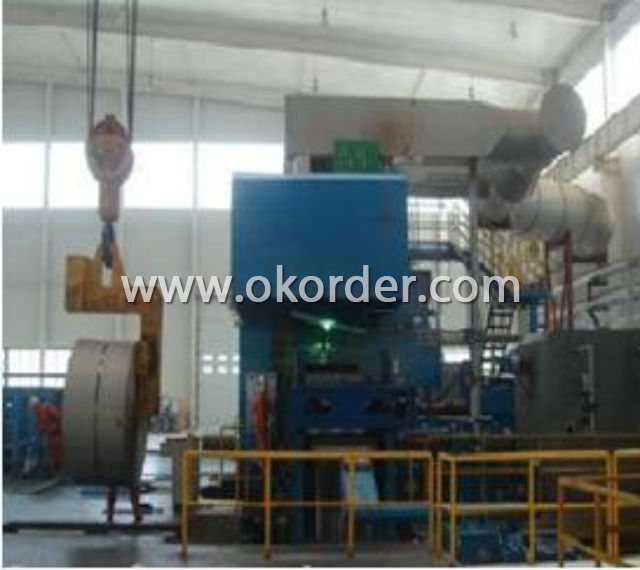
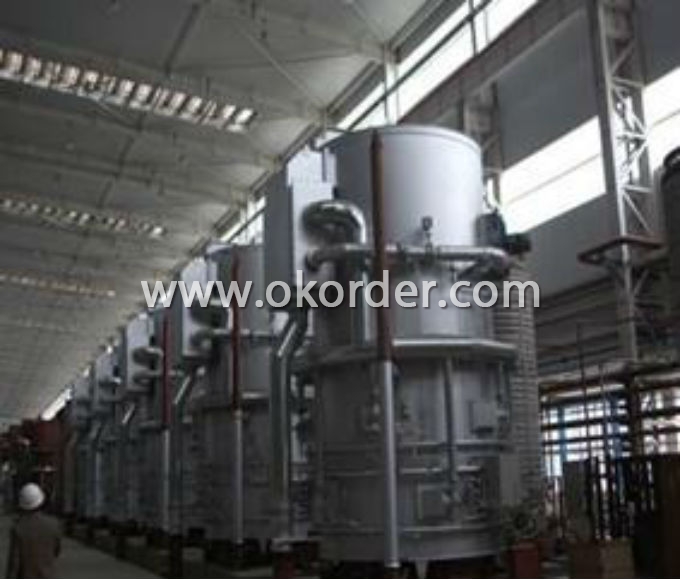
Cutting Line Stock Area
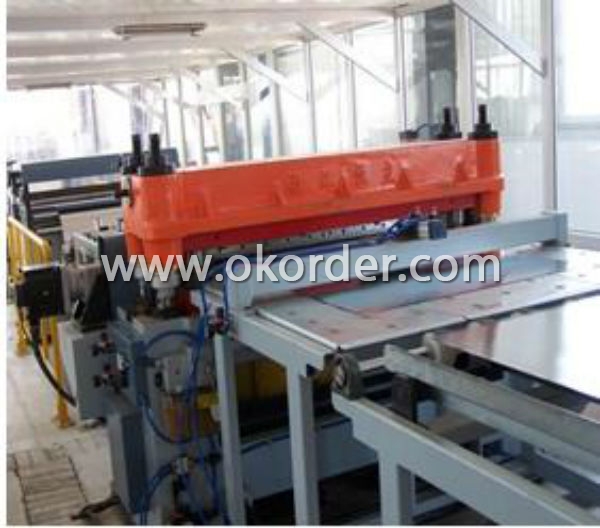
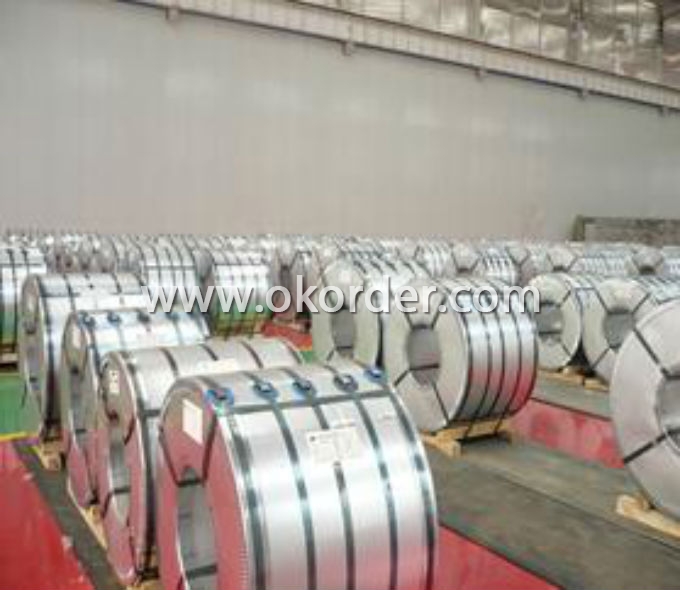
Quantity Control System of Tinplate
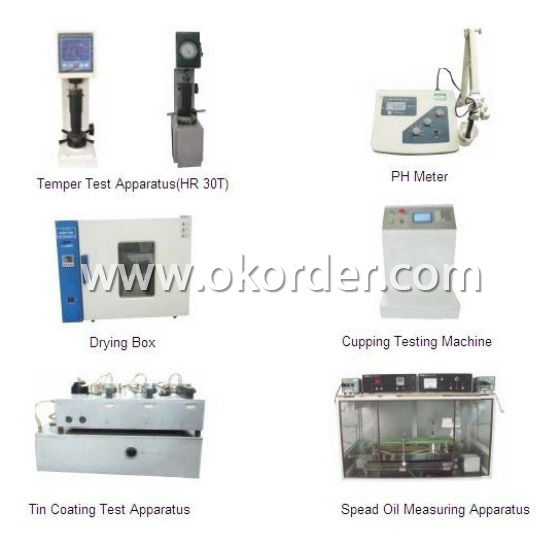
- Q: How does tinplate perform in terms of heat resistance?
- Tinplate has a relatively low heat resistance compared to other metal materials. It can withstand moderate temperatures without significant deformation or damage, but it is not suitable for high-temperature applications.
- Q: What is the shelf life of tinplate canned goods?
- The shelf life of tinplate canned goods can vary depending on the specific product and storage conditions. Generally, these canned goods have a shelf life of 2 to 5 years when stored in a cool, dry, and dark place. However, it is recommended to check the expiration date on the can and discard any cans that are bulging, leaking, or have a foul odor as they may be spoiled.
- Q: Can tinplate be used for packaging personal hygiene products?
- Yes, tinplate can be used for packaging personal hygiene products. Tinplate is a popular choice for packaging due to its durability, resistance to corrosion, and ability to preserve the quality and freshness of products. Additionally, tinplate can be easily decorated, making it suitable for branding and marketing purposes.
- Q: What are the main factors influencing the price of tinplate?
- The main factors influencing the price of tinplate include the cost of raw materials, particularly tin and steel, as well as supply and demand dynamics in the market. Other factors such as production and manufacturing costs, fluctuations in currency exchange rates, and global economic conditions can also impact tinplate prices. Additionally, government policies and regulations related to trade, tariffs, and environmental standards can influence the price of tinplate.
- Q: How does tinplate compare to glass packaging?
- Tinplate packaging offers several advantages over glass packaging. Firstly, tinplate is much lighter than glass, making it easier and more cost-effective to transport. Additionally, tinplate is highly durable and resistant to breakage, which ensures product safety and reduces the risk of damage during handling or shipping. Furthermore, tinplate can be easily shaped and molded into various forms, allowing for greater design flexibility. Lastly, tinplate is recyclable, making it a more sustainable and environmentally friendly option compared to glass.
- Q: What is the purpose of tin coating on tinplate?
- The purpose of tin coating on tinplate is to prevent corrosion and enhance the durability of the underlying steel substrate.
- Q: How is tinplate stored?
- Tinplate is typically stored in dry and well-ventilated areas to prevent moisture and rusting. It should be stacked on pallets or shelves, away from direct sunlight and sources of heat. Additionally, it is important to ensure proper labeling and organization to facilitate easy access and inventory management.
- Q: How is tinplate different from other types of steel?
- Tinplate is different from other types of steel primarily because it has a thin layer of tin coating on its surface. This coating provides tinplate with exceptional corrosion resistance, making it ideal for packaging food and beverages. Additionally, the tin coating gives tinplate a shiny appearance and enhances its solderability, making it suitable for various industrial applications.
- Q: How is tinplate coated for gift packaging?
- Tinplate is typically coated for gift packaging through a process called electrolytic tinplating. This involves immersing the tinplate in an electrolyte solution and passing an electric current through it, causing a layer of tin to be deposited onto the surface of the tinplate. This tin coating provides a protective barrier against corrosion and enhances the overall appearance of the packaging, making it more suitable for gift presentation.
- Q: What are the advantages of using tinplate for beverage cans?
- There are several advantages of using tinplate for beverage cans. Firstly, tinplate provides excellent protection against corrosion, ensuring the integrity of the product inside. Secondly, tinplate cans are lightweight and durable, making them easy to transport and handle. Additionally, tinplate is easily recyclable, making it an environmentally friendly choice. Lastly, tinplate cans offer a high-quality printing surface, allowing for attractive designs and branding opportunities.
1. Manufacturer Overview
| Location | Hebei,China |
| Year Established | 2006 |
| Annual Output Value | Above US$100 Million |
| Main Markets | Singapore;Belgium |
| Company Certifications |
2. Manufacturer Certificates
| a) Certification Name | |
| Range | |
| Reference | |
| Validity Period |
3. Manufacturer Capability
| a) Trade Capacity | |
| Nearest Port | Tianjin |
| Export Percentage | 1% - 10% |
| No.of Employees in Trade Department | |
| Language Spoken: | English;Chinese |
| b) Factory Information | |
| Factory Size: | Above 240,000 square meters |
| No. of Production Lines | Above 11 |
| Contract Manufacturing | |
| Product Price Range | High;Average |
Send your message to us
Tinplate For Edible Oil Can-CFX
- Loading Port:
- China Main Port
- Payment Terms:
- TT or L/C
- Min Order Qty:
- 20 Tons~25 Tons m.t.
- Supply Capability:
- 40000 MT Per Month m.t./month
OKorder Service Pledge
OKorder Financial Service
Similar products
Hot products
Hot Searches
Related keywords
